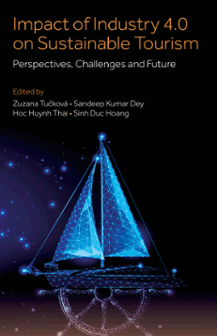
Index
Impact of Industry 4.0 on Sustainable Tourism
ISBN: 978-1-80455-158-5, eISBN: 978-1-80455-157-8
Publication date: 2 November 2023
Citation
(2023), "Index", Tučková, Z., Dey, S.K., Thai, H.H. and Hoang, S.D. (Ed.) Impact of Industry 4.0 on Sustainable Tourism, Emerald Publishing Limited, Leeds, pp. 151-157. https://doi.org/10.1108/978-1-80455-157-820231011
Publisher
:Emerald Publishing Limited
Copyright © 2024 Zuzana Tučková, Sandeep Kumar Dey, Hoc Huynh Thai and Sinh Duc Hoang. Published under exclusive licence by Emerald Publishing Limited
INDEX
- Prelims
- Chapter 1 Do Travel Vloggers' Credibility Influence Tourists' Visit Intention to Eco-tourism Destination? Evidence From Bangladesh
- Chapter 2 The Effect of Tourism and Technological Contribution on Economic Growth – The Case of Vietnam and Other East Asian Members
- Chapter 3 Applications of Artificial Intelligence (AI) in the Tourism Industry: A Futuristic Perspective
- Chapter 4 Sustainable Management With Big Data: A Systematic Review on Tourism
- Chapter 5 Virtual Tourism as an Alternative to Sustainable Tourism
- Chapter 6 Application of Augmented Reality (AR) and Virtual Reality (VR) in Promoting Guest Room Sales: A Critical Review
- Chapter 7 The Exploration of the Metaverse by Destination Management Organisations Towards Sustainability
- Chapter 8 Shaping and Reshaping of Tourism: The Influence of IR 4.0 for Modifying the Tourist Behaviour
- Chapter 9 Rise of Big Data in the Industry 4.0 Era and the Crucial Need for Data Science in Sustainable Tourism
- Index